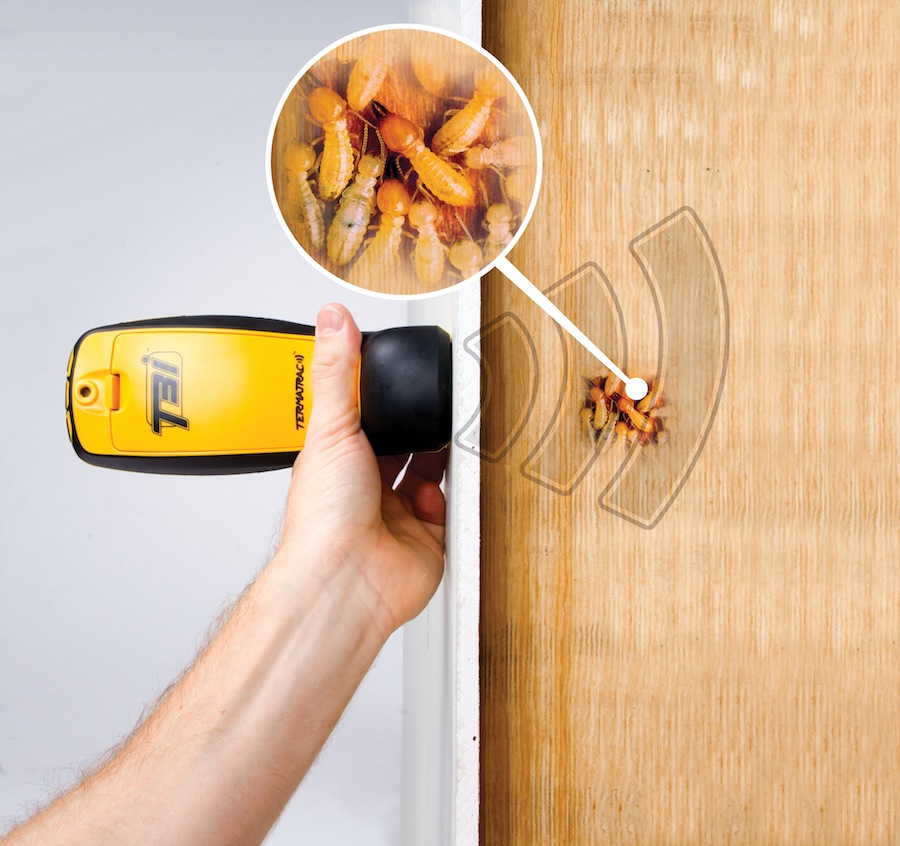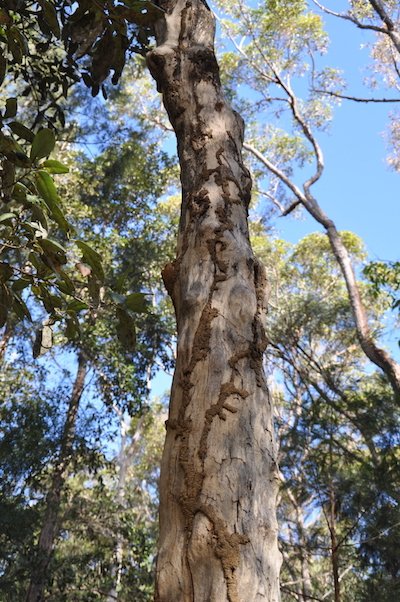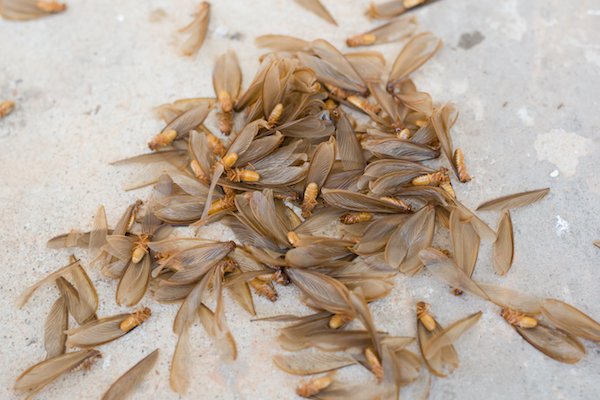Professional termite inspections
- Gold Coast Pest Services
Gold Coast Termite inspections - A "health check" for your home
Termite inspections are vital to protect your biggest investment
With the chances of termites (or white ants as they are commonly known) attacking your home being more likely than fire, flood and natural disaster combined, it's wise to get a regular termite inspection on the Gold Coast. Australian Standards recommend you should have a termite inspection at least once a year and more often in areas of high termite pressure. A termite inspection is like a "health check" on your property, not only checking to see whether termites ("white ants") are attacking your property or are present in your yard, but also identifying issues around the property that need to be remedied to make it less attractive to termites.
What are the signs of a termite infestation?
Check out our video with the Bug Doctor
Gold Coast Pest Services - comprehensive Gold Coast termite inspections
All inspections carried out according to Australian Standards 3660.2
Inspection inside, outside, roof void, sub-floor, garage and yard
Use of moisture meter to detect leaks or areas of moisture behind walls
Use of motion detector and thermal imaging cameras to investigate areas of concern
Post-inspection discussion of findings, advice on options for Gold Coast termite treatments and protection
Comprehensive 20+ page report with photographs and recommendations
Optional video short of inspection findings is available (for an additional fee)
What our customers say…
Capable of detecting termites behind walls
The latest in termite detection technology
Save with a combined termite inspection and pest treatment.
Learn how...
What's involved in a professional termite inspection?
A proper termite inspection is not the same as a free "termite check" offered by some companies. Our experienced technicians take time to check all accessible areas, using the latest termite detection technology to investigate areas of concern. A complete termite inspection can sometimes take up to 2 hours or more, depending on the size of the property. If you want the feeling of security that a proper termite inspection can provide, give our friendly team a call.
Termite Health Assessment: We do offer a free termite health assessment, which is not an inspection for termites but will highlight risk areas around your property, resulting in a written termite management proposal for your property.
Check out our video with the Bug Doctor...
What's included in a termite inspection report?
Firstly, the report should confirm that the inspection has been carried out according to Australian Standard 3660.2. Secondly, there are some key elements to all termite inspection reports (these sections should be completed fully by all quality termite professionals).
The report will contain a description of the property and define what areas have been inspected and list the areas not inspected (and reason, such as lack of access).
It will list observed termite activity and record any visual termite damage.
Importantly, it will list conditions around the property that may be conducive to allowing a termite attack, such as high levels of moisture, leaks, construction faults, high soil levels, wood sources, poor ventilation and stored goods (see our termite prevention tips.)
It will specify if any further inspections are required.
This last point is important as the standard termite inspection is a visual termite inspection, it does not include moving furniture or removing parts of walls to investigate areas of concern. Although technology may be used to "see" what is going on behind the walls, the inspection does not include drilling walls to better see the level of activity and damage. This is called an invasive inspection and may be recommended. Other recommendations may also be made to improve access, especially if areas of the roof or sub-floor cannot be access, thus preventing a thorough inspection.
A termite inspection is part of a termite treatment process
Although most customers have annual termite inspections as part of their property termite management plan, termite inspections are also the critical first step in assessing a property under attack from termites. In fact, termite professionals should not start a termite treatment unless a complete termite inspection has been carried out. Often quotes for termite treatments will have been made without an inspection being carried out, mainly resulting from the desire of many homeowners to get a free quote. The pest professional has to make certain assumptions in providing this quote. However, an inspection does need to be carried out before any treatment takes place and should the pest professional make some unusual discovery, the termite treatment recommendation may need to be changed.
Why is a full termite inspection required before a termite treatment?
There is key information the pest professional needs to confirm, as it can impact the Gold Coast termite control program.
What species of termite is attacking the building? (Is there more than one species?)
Where / how are the termites entering the building? (Need to find all termite entry points)
Are there any termite conducive conditions that need to be fixed before treatment begins?
Are there any construction flaws that need to be remedied?
What is the extent of the termite damage?
Signs of termites
If you can see and identify termites correctly, you have a clear confirmation that you have a termite problem. However, more often than not, for the untrained eye, termites are not that easy to detect until significant damage is done – the main reason for having professional termite inspections. However, it is still worth knowing the signs of termite activity so you can give your pest professional a call if you suspect something suspicious.
Rippled paint could mean termites!
Termite mudding on tree
Winged termites
Termite damage . . .
Major termite damage is often only picked up when a ceiling starts to bow or roof, floor or wall starts to collapse. But there are subtle signs of termite damage that can be picked up, if you look carefully. Dents or ripples in wood or paintwork can be an indication that termites are feeding underneath, already causing damage.
Termite mudding . . .
Presence of mudding / mud tubes on trees, fencing, exterior of building, sub-floor or roof void. These are the highways built by termites from the soil to their feeding sites. The mud protects the termites from predators and keeps the tunnels nice a moist to prevent them drying out. Sometimes small spots of mud may be detected in wood (door frames and skirting boards) or the plasterboard of walls – these appear when their feeding gets too close to the surface and they use the mud to cover up the holes.
Winged termites . . .
The appearance of winged termites is a sure sign there is a large nest nearby. These are the new kings and queens that are released from nests in huge numbers on warm, humid nights. Learn more about termites...
Termite noises . . .
Strange, quiet scratching or tapping noises can often be heard, especially at night. These are the sounds of termites eating or “head-banging” as they communicate with each other.
If you do suspect any of the signs above, don’t disturb the termites by picking mud tubes and certainly don’t spray them with any household insecticide. Both actions will make them far more difficult to control. If you suspect anything suspicious call us immediately for a complete termite inspection.
Tips for making your home less attractive to termites
Homeowners have a big role to play in reducing the chances of a termite attack on their property. Efforts should be focused on three areas:
Reducing areas of increased moisture around the home (termites love moisture!)
Reducing termite food (wood and paper) around the home
Making sure the perimeter, sub-floor and roof void of the home are clear of obstacles so any termite "break-ins" can be seen.
Watering systems attract termites
TErmites love firewood!
Stored goods make termites hard to spot
Here are some simple tips to make your home less attractive to termites...
Reducing moisture around and under your home . . .
- Ensure ground water drainage flows away from / around your home.
- Ground level should slope away from house and / or soil drainage. systems should be installed. If you have a moist sub-floor, installing fans may also be beneficial.
- Don’t have a watering system or regularly water plants adjacent to the house.
- This really means you need to avoid having substantial garden beds adjacent to the house.
- Ensure roof guttering and downpipes do not leak and discharge to the stormwater drains.
- Make sure any external taps are not dripping and ideally have a drain underneath.
- Check for leaks in the kitchen, bathroom and laundry (you may need a plumber or pest inspector to help here).
Reducing potential termite food around and under your home . . .
- Do not use wood immediately adjacent to the house.
- If you musy use wood mulch, make sure it has been treated with an appropriate insecticide or it is classed as termite-resistant timber. Keep in mind, "termite-resistant" does not mean "termite-proof".
- Make sure any waste timber or cardboard boxes (also great termite food) are thrown out or stored above ground level, ideally away from the building.
- Make sure any firewood is stored off the ground away from the building.
Keep areas around and under your home clear . . .
- Keep the perimeter of your home clear of plants and stored items; if you can’t see the edge of the building you won’t be able to see any termite “break-ins”!
- If you have a sub-floor, avoid the temptation to store your excess / unwanted items in this inviting area. Stored goods prevent your ability to see any termite activity and also reduce ventilation. If the stored goods include wood or cardboard boxes, you are also providing some nice termite food!
Further reading:
Top 10 tips for a termite smart garden
6 design tips for a termite smart deck


















